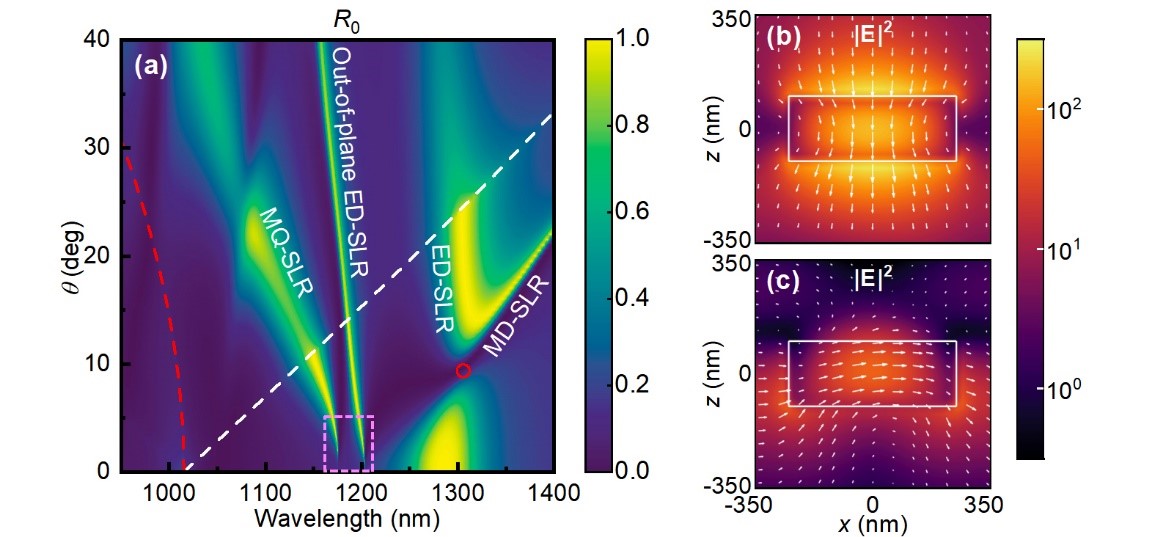Researchers Discover a New Type of Surface Lattice Resonance
Date:13-09-2022 | 【Print】 【close】
High-index dielectric nanostructures supporting electric and magnetic resonances have emerged as new building blocks in nanophotonics for novel functionalities. By periodically arranging these nanostructures, the coherent interference between the localized Mie resonances of single nanostructures and the in-plane diffracted light can result in the so-called Mie SLRs with many advantages.
These include narrow linewidths, high quality factors, and strong near field enhancements extended over large volumes. However, most studies have focused on in-plane Mie SLRs, including electric or magnetic dipole SLR (ED-/MD-SLR) and multipole SLRs, and it was not until recently that the out-of-plane MD-SLR has been reported.
Researchers from the Shenzhen Institutes of Advanced Technology (SIAT) of the Chinese Academy of Sciences investigated the periodic silicon nanodisks under oblique incidence with TM polarization, and discovered out-of-plane Mie electric dipole surface lattice resonance (ED-SLR) for the first time.
The study was published in Optics Express on Sept. 7.
The team discovered that the out-of-plane Mie ED-SLR can be excited together with the in-plane ED-SLR, MD-SLR and MQ-SLR in periodic silicon nanodisks under oblique incidence. They found that the out-of-plane Mie ED-SLR can have four times larger quality factors than the in-plane one under the same condition.
"It is known that the out-of-plane plasmonic ED-SLR can have larger quality factors than the in-plane one in periodic metallic nanodisks. We have been seeking the Mie counterpart in high-index dielectric nanostructures." Dr. LI said.
LI‘s team noticed that, unlike the out-of-plane plasmonic ED-SLR, which is a subradiant or dark mode, the out-of-plane Mie ED-SLR can be treated as a bright mode, and has distinct near-field optical distributions and dispersion relationship.
"This is because the dipole field for Mie ED-SLR is induced by displacement currents, but by free electron gases for plasmonic ED-SLRs." Dr. LI explained.
The researchers also found that the out-of-plane Mie ED-SLR can define a symmetry-protected bound state in the continuum (BIC) at normal incidence. This is because the out-of-plane Mie ED-SLR is not allowed to emit at normal incidence. For small incidence angles, the quality factor can even reach as high as 104.
"This work provides a new approach for achieving ultrahigh quality factors of Mie SLRs in dielectric metasurfaces," said Dr. LI, "additionally, the coexistence of multipole SLRs open new prospects for manipulating light–matter interactions with rich physics."

When periodic silicon nanodisks are obliquely illuminated by TM-polarized light, out-of-plane Mie ED-SLR is excited together with the in-plane ED-, MD- and MQ-SLRs. The greatly enhanced electric fields of the out-of-plane and in-plane Mie ED-SLRs are extended over large volumes, and are aligned with the z and x axes, respectively. (Image by SIAT)
Media Contact:
ZHANG Xiaomin
Email:xm.zhang@siat.ac.cn